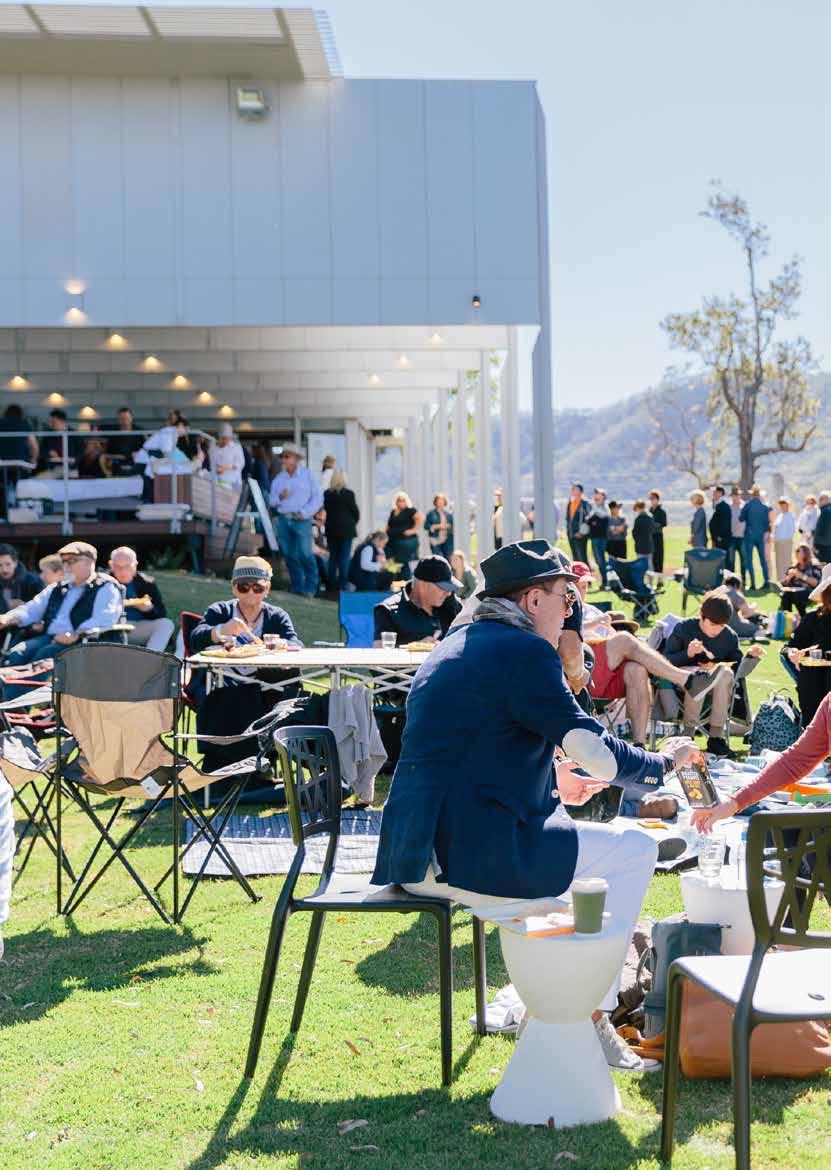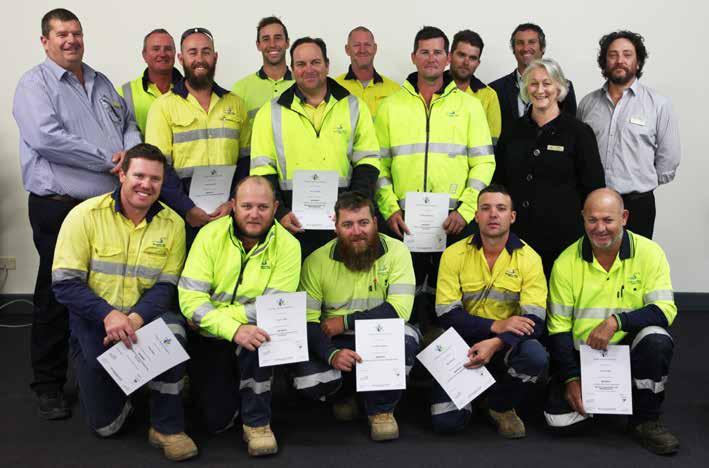
9 minute read
Spectacular Scenery and Healthy Environment
Spectacular SCENERY
AND HEALTHY ENVIRONMENT
GROWING THE ONE MILLION TREES PROGRAM
Council’s One Million Trees Program, which aims to plant a million native trees throughout the region in partnership with the community by 2025, has continued to grow with more than 80 applicants requesting almost 50,000 plants in 2018-19. The One Million Trees Program comprises four initiatives - Rural Trees, River Trees, Community Trees and Habitat Trees and has seen the planting of more than 300,000 trees by schools, community groups, local organisations and rural landowners since its commencement in 2015. During 2018-19, Council provided 12,216 plants for the Community Trees initiative, 1,060 plants for Habitat Trees , 13,181 plants for River Trees and 10,073 plants for the Rural Trees initiative. Key projects during the year included work by Tamborine Mountain Landcare and Lamington Landcare in planting several thousand plants in reserves and on private properties. Other projects included 14 planting events in Council reserves across the region, supported by participants in the Skilling Queenslanders for Work program who planted almost 10,000 trees.
WAGING WAR ON INVASIVE WEEDS
Mayor Greg Christensen planted the 15,000th tree in November 2018 as part of a project that has helped to improve water quality of local catchments, reduce erosion and encourage the return of native plants and animals by removing invasive weeds. Since 2015, when Council began working with the Federal Government’s Green Army to remove tonnes of invasive weeds from a 6.5-hectare site at Riverbend Drive, Canungra and revegetate the area with native plants, it has continued to gain ground in the war on invasive weeds. Privet, Celtis, Madeira Vine and the Castor Oil Plant have all been targeted in the partnership program which now includes participants in the State Government’s Skilling Queenslanders for Work Program. As these invasive weeds reduce bank stability, water quality and the biodiversity of waterways their removal is key to maintaining the spectacular scenery and natural environment for which the Scenic Rim is renowned. The site at Canungra is one of many across the region that have seen substantial works including weed treatment and removal and replanting with native species which, once established, will provide riparian habitat for native birds and animals.
In reserves and parks in other riparian areas across the region, Council has supported Healthy Land and Water’s Cat’s Claw Project by working to eradicate the invasive vine which contributes to local flooding and the erosion of stream banks . Council undertook an extensive program of inspection and treatment of weeds alongside Scenic Rim roads in 2018-19 . It treated more than 2,000 kilometres of Council’s local road network, targeting key weed infestations including Tamborine Village, Tamborine Mountain, Beechmont and Boonah and carried out a spraying program that covered a total of 1,054 kilometres of roadside on state-controlled roads . Additional treatment projects, to combat invasive vine weeds, were completed in areas including Moogerah, Boonah and Tamborine Mountain . More than one hectare of Cat’s Claw Creeper was removed from the road reserve around the Moogerah Dam . Under Council’s Pest Plant Program, more than 40 reserves at Tamborine Mountain, Tamborine Village, Beechmont and Canungra were treated for infestations of weeds including Privet, Devil’s Fig, Dutchman’s Pipe and Cat’s Claw Creeper . Other works have included the treatment of declared weeds including Giant Rat’s Tail, Parramatta Grass and Mother-ofMillions in key reserves around Beaudesert and Boonah .
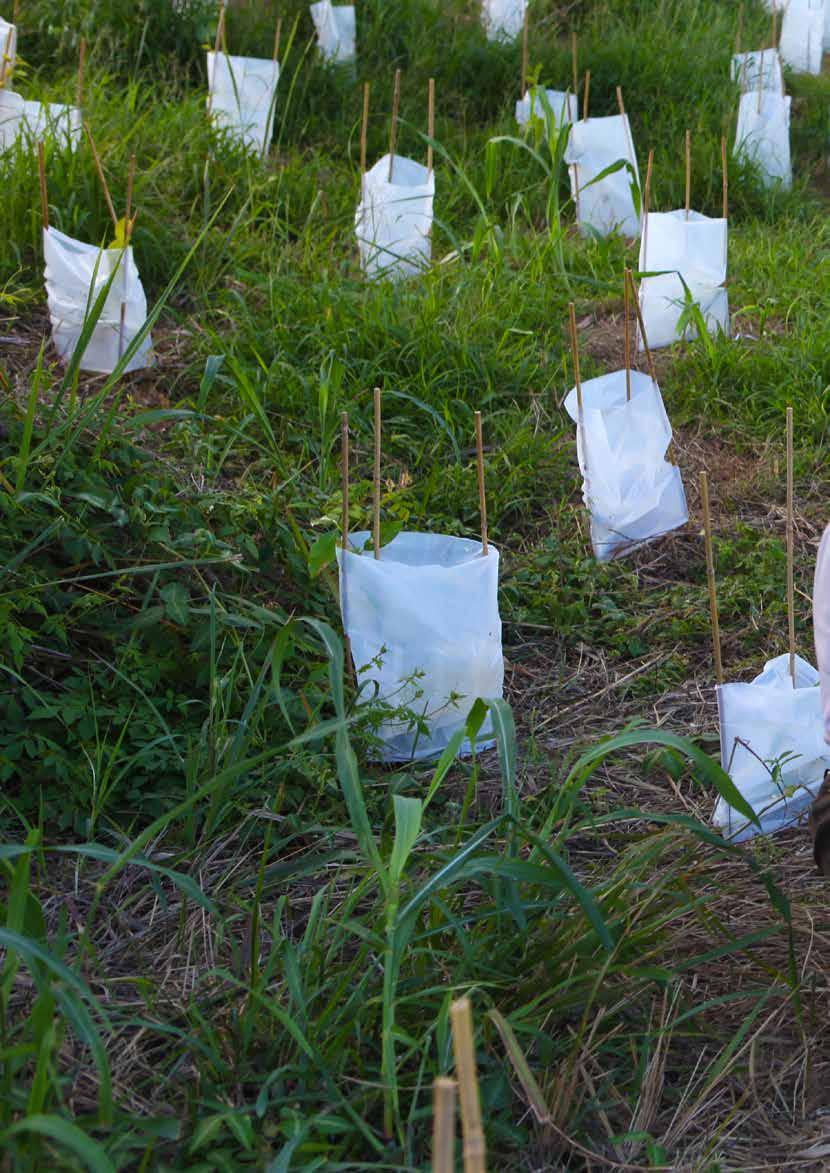
SUPPORTING ENVIRONMENTAL PROJECTS
Scenic Rim property owners and environmental groups shared in more than $100,000 of funding under Council’s Environmental Grants Program in 2018-19 . Although the total value of funding applications exceeded Council’s budget for the year, all 22 applicants were successful in securing support for their efforts to maintain habitats for native plants and animals through their participation in the Land for Wildlife initiative or specific environmental projects . A major beneficiary was Tamborine Mountain Landcare, a dedicated band of volunteers working to preserve and enhance the natural environment, for a vegetation corridors regeneration project . Partial funding for some grant applicants has enabled Council to maximise support for worthwhile projects across the region . The diverse projects ranged from re-vegetation and weed control, the maintenance of Brigalow scrub and native pasture protection, to the re-stocking of waterways with native fish and the restoration of koala habitat The Environmental Grants Program aims to encourage and assist the community in managing the local environment for the benefit of the region as a whole . It supports Council’s conservation strategies, enhances community understanding of the region’s outstanding natural assets and raises awareness of environmental issues among community members .
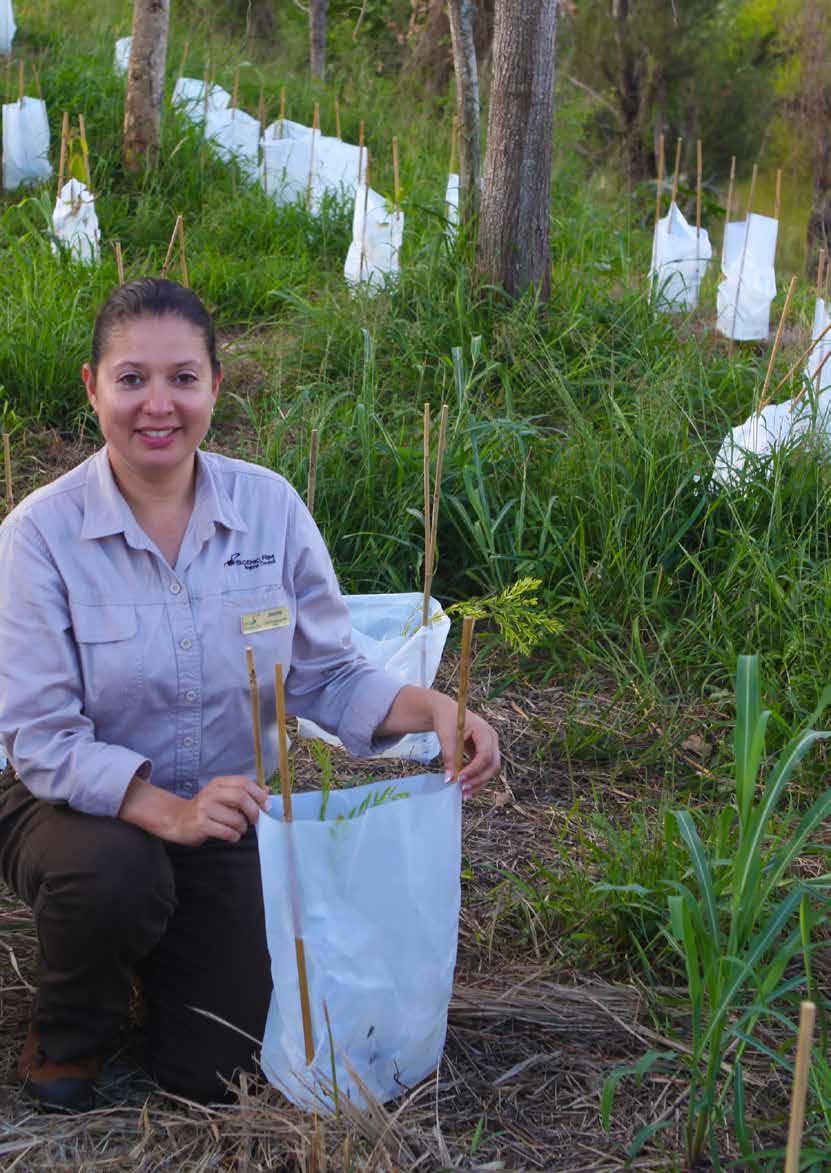
IMPROVING WATERWAYS
The Scenic Rim’s riparian areas continued to be enhanced in 2018-19 through Council’s partnership with a number of organisations working to improve the quality of the region’s waterways . Council has partnered with Healthy Land and Water, the Gold Coast Catchment Association and local Landcare groups to deliver revegetation projects, remove invasive weeds and carry out critical bank stabilisation works at Tamborine Mountain and Beechmont . Other works have included the removal of Cat’s Claw Creeper in Council reserves to support Healthy Land and Water and SEQ Water as part of a regional riparian weeds program, with the treatment of reserves along Canungra Creek . Council’s engagement with non-commercial landholders on the Logan River near Allenview saw the treatment of two kilometres of riparian weeds - Cat’s Claw Creeper, Balloon Vine, Cestrum and Castor Oil - on four Scenic Rim properties . Removal of the weeds was followed by the establishment of 3000 plants along this reach of the Logan River identified as a priority environmental area .

In collaboration with SeqWater and Healthy Land and Water, Council conducted site visits at two major agricultural enterprises near Kagaru to discuss ways to minimise their operations’ impacts on the Logan River and their own properties . Discussion focused on the benefits of joining the Resilient Rivers Initiative, which is working to prevent sedimentation of rivers and erosion of river banks . Similar discussions are planned with Scenic Rim turf farmers in 2019-20, following the review by relevant stakeholders of a landholder engagement proposal . The management of erosion and sedimentation within construction sites in the region continued to be reviewed to identify opportunities for process improvements . A basic erosion and sediment control training session, attended by relevant Council staff and representatives from the Logan Construction Force, was delivered in March 2019 by Healthy Land and Water . The Scenic Rim Rivers Improvement Trust completed more than $130,000 of riverine weed management and restoration work in 2018-19 across the Albert, Upper-Logan and Bremer Rivers and in the Upper-Teviot Brook and Upper Warrill Creek catchments .
MANAGING RESERVES
Following a particularly dry season, Council stepped up its bushfire management program in 2018-19, with key works including the maintenance and upgrade of more than 50 fire trails and fuel management zones . New fire trails were established in the Tamborine Mountain Escarpment Reserve and the Nindooinbah Reserve to improve access by fire-fighting vehicles and the ability to carry out controlled burns . In 2018-19 Council secured a Queensland Government grant under the Local Government Grants and Subsidies Program for the improvement of fire trail networks in Gleneagle and Tamborine Mountain, with works to be carried out early in the 2019-20 year . With co-funding by Council and the Queensland Government, this represents a significant investment in improving access by emergency vehicles that will improve fire-fighting capability in these areas . To reduce fuel levels in reserves ahead of the bushfire season, areas at Tamborine Mountain, Beaudesert, Boonah and Kooralbyn were identified for controlled burns .
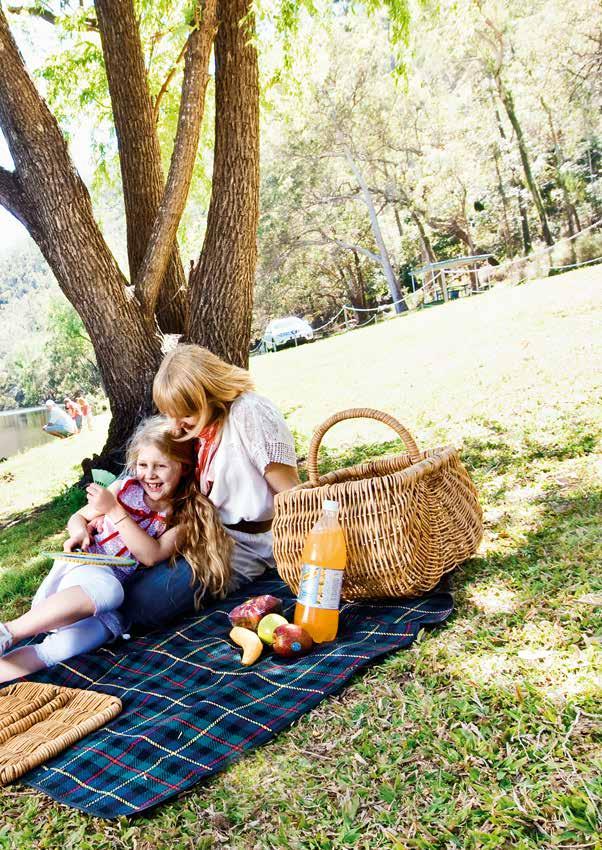
RAISING AWARENESS OF ENVIRONMENTAL ISSUES
A wide range of community education programs delivered in 2018-19 aimed to raise awareness of environmental issues to help preserve the Scenic Rim’s natural values and biodiversity . Thirteen events delivered across the region during the year included topics such as fire management, weed management, community plantings, fauna forensics and the construction of nest boxes for native wildlife . The first Scenic Rim Carp Cup, to help eradicate pest fish species through a fun family fishing event, was held at Boonah in 2018 . With 65 participants, the event proved so popular it will be repeated in 2019 at Canungra .
ENVIRONMENTAL MANAGEMENT 2016-17 2017-18
Number of new Voluntary Conservation Agreements 3 2
LAND PROTECTED UNDER ENVIRONMENTAL MANAGEMENT PROGRAMS
Bushland reserves 152 152 Land for Wildlife properties 235 238 Environmental Grants 14 14 Conservation Agreements 16 21
COUNCIL NURSERY TREES PLANTED
Distributed under Free Trees Program 7,290 6,678 Trees planted in parks, gardens and cemeteries 620 199 Shrubs, grasses and ground covers planted in parks, gardens and cemeteries 12,625 18,885 Rural Trees Program, National Tree Day and in-kind donations 929 1424 Other plants distributed or planted (e.g. Naturalisation Ceremonies) NA NA
Total 21,464 27,186 SCENIC RIM ONE MILLION TREES PROGRAM
Rural Trees Initiative 32,160 12,026 Habitat Trees Initiative 9,078 4,926 Community Trees Initiative 16,514 7,893 River Trees Initiative NA 550 Revegetation Projects (Green Army/Energex/Healthy Land and Water) 29,396 11,183
Total 87,148 36,578
0
287 22 21

7,840 497
10,605
NA
164
19,106
10,073 1,060 12,216 13,181
9,956
46,486

Skilling Queenslanders For Work participants, Cr Virginia West, Healthy Land and Water CEO Julie McLellan and Mayor Greg Christensen
SECURING LAND FOR WILDLIFE
Scenic Rim landowners have continued to play an important role in preserving and enhancing the natural environment by working in partnership with Council to maintain habitats for native plants and animals on private property . In 2018-19, 20 new members joined Council’s Land For Wildlife program which provides technical advice to property owners who may also apply for grants for specific projects to support conservation efforts that help to protect the region’s world-class biodiversity . Council staff carried out inspections of all 20 new member properties and re-visited eight properties participating in the Land For Wildlife Program . Council celebrated the 20th anniversary of the Land for Wildlife Program, in partnership with Logan City Council, at a private property in Tamborine Village in September 2018 . Among guests at the celebration was a founding member of Land For Wildlife in the Scenic Rim, a Tamborine Mountain property owner who joined the program in 1998 .


Voluntary Conservation Agreements between Council and landowners offer rates relief for those whose properties have significant environmental value . New members to the program in 2018-19 included landowners whose properties contain areas of Brigalow scrub and Swamp Tea-tree (Melalueca irbyana) and more than 12 rare and threatened species . Council’s inspection program during the year included visits to three new properties and re-inspection of two properties under Voluntary Conservation Agreements .
